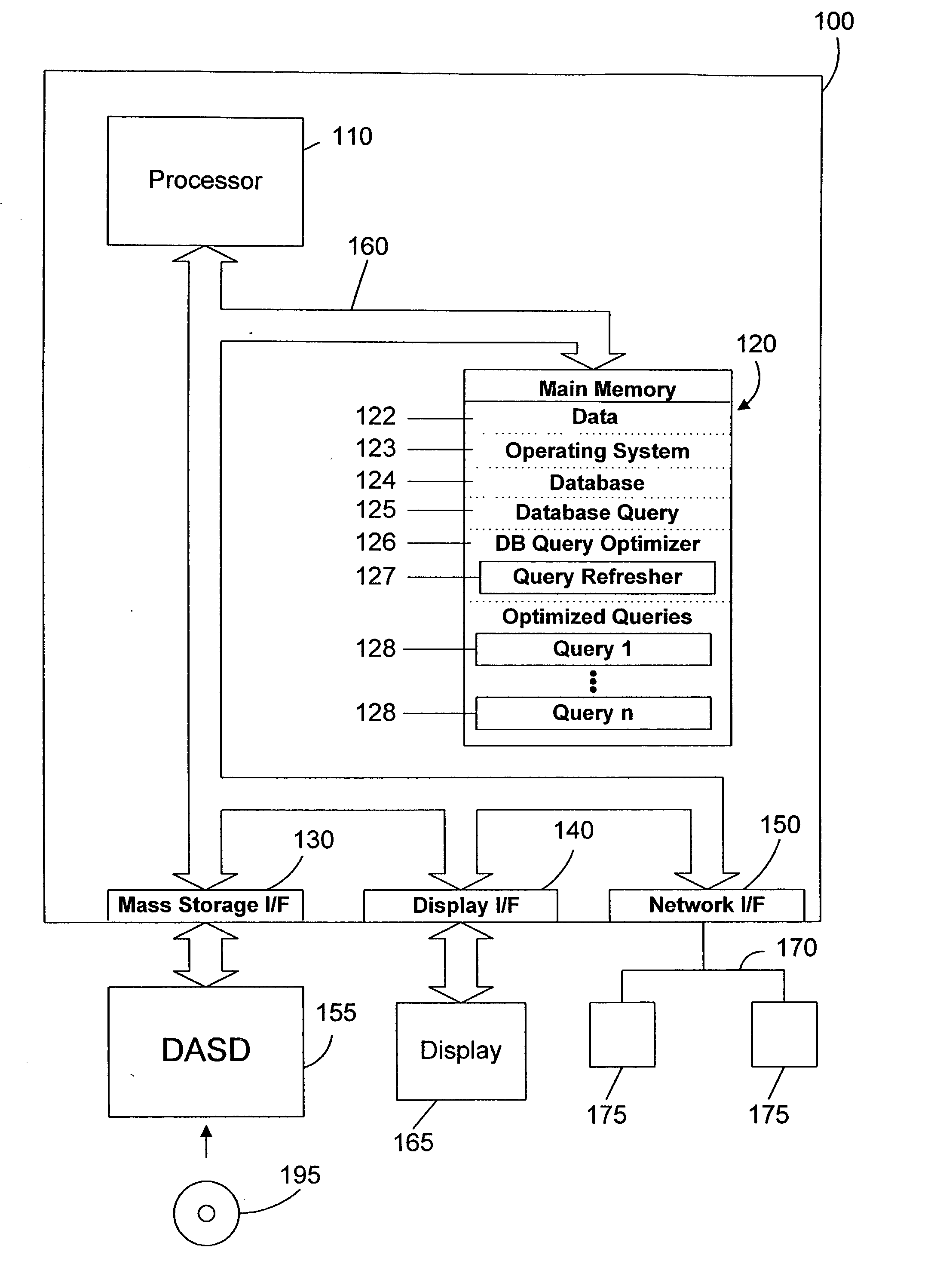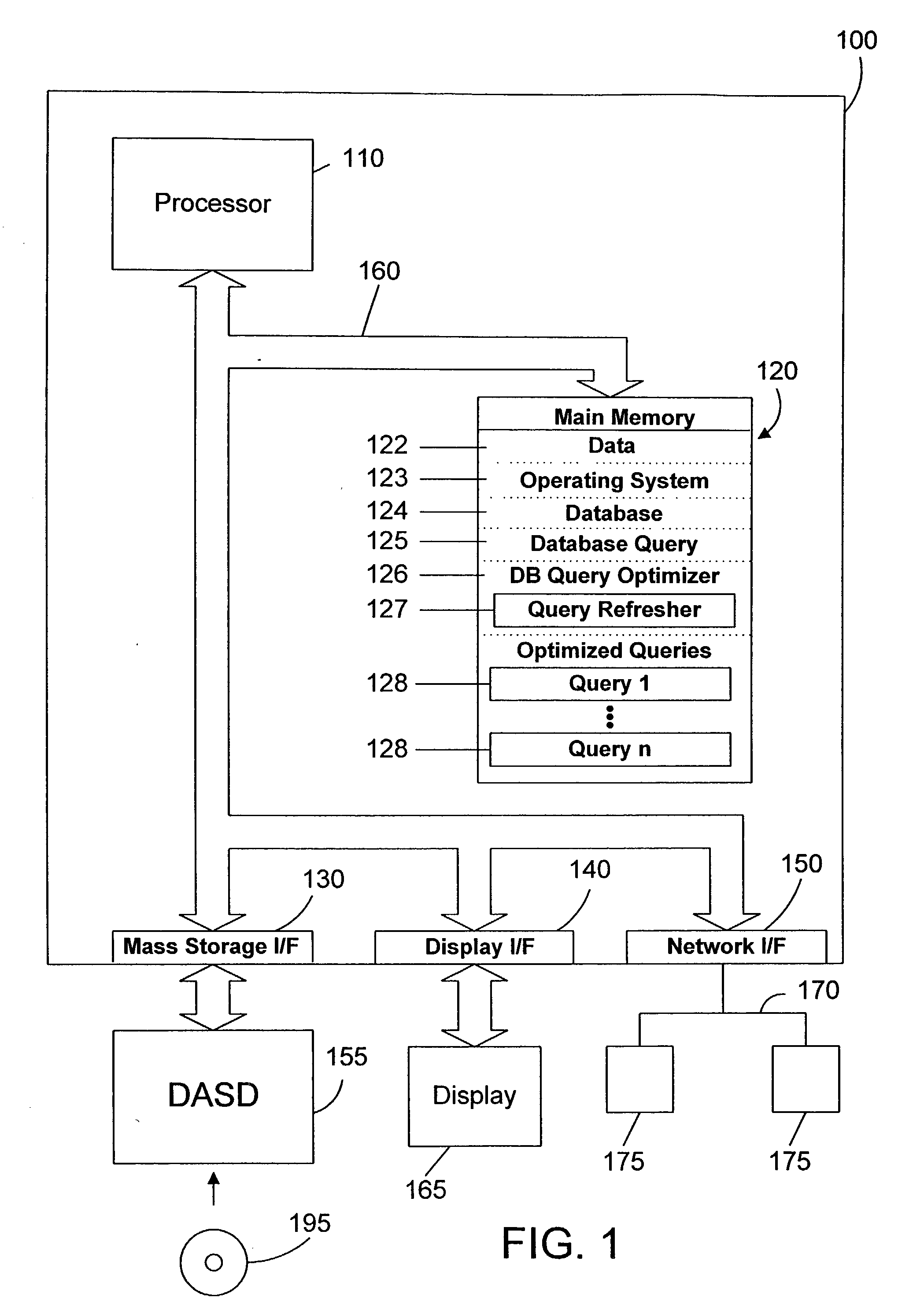Apparatus and method for refreshing a database query
a database and database query technology, applied in the field of computer systems, can solve the problems of database performance degradation, query optimizer to completely optimize, and no benefit from any of the work previously performed in optimizing, and achieve the effect of increasing the performance of query optimization in the database system
- Summary
- Abstract
- Description
- Claims
- Application Information
AI Technical Summary
Benefits of technology
Problems solved by technology
Method used
Image
Examples
Embodiment Construction
[0028] The preferred embodiments provide a way to refresh a previously-optimized query when the only change to the query is a change in data type of one or more operands in the query. Refreshing the query for a change in data type may be performed by a simple refresh operation, without re-optimizing all of the expressions in the query.
[0029] Referring now to FIG. 1, a computer system 100 is one suitable implementation of an apparatus in accordance with the preferred embodiments of the invention. Computer system 100 is an IBM iSeries computer system. However, those skilled in the art will appreciate that the mechanisms and apparatus of the present invention apply equally to any computer system, regardless of whether the computer system is a complicated multi-user computing apparatus, a single user workstation, or an embedded control system. As shown in FIG. 1, computer system 100 comprises a processor 110, a main memory 120, a mass storage interface 130, a display interface 140, and ...
PUM
 Login to View More
Login to View More Abstract
Description
Claims
Application Information
 Login to View More
Login to View More - R&D
- Intellectual Property
- Life Sciences
- Materials
- Tech Scout
- Unparalleled Data Quality
- Higher Quality Content
- 60% Fewer Hallucinations
Browse by: Latest US Patents, China's latest patents, Technical Efficacy Thesaurus, Application Domain, Technology Topic, Popular Technical Reports.
© 2025 PatSnap. All rights reserved.Legal|Privacy policy|Modern Slavery Act Transparency Statement|Sitemap|About US| Contact US: help@patsnap.com



